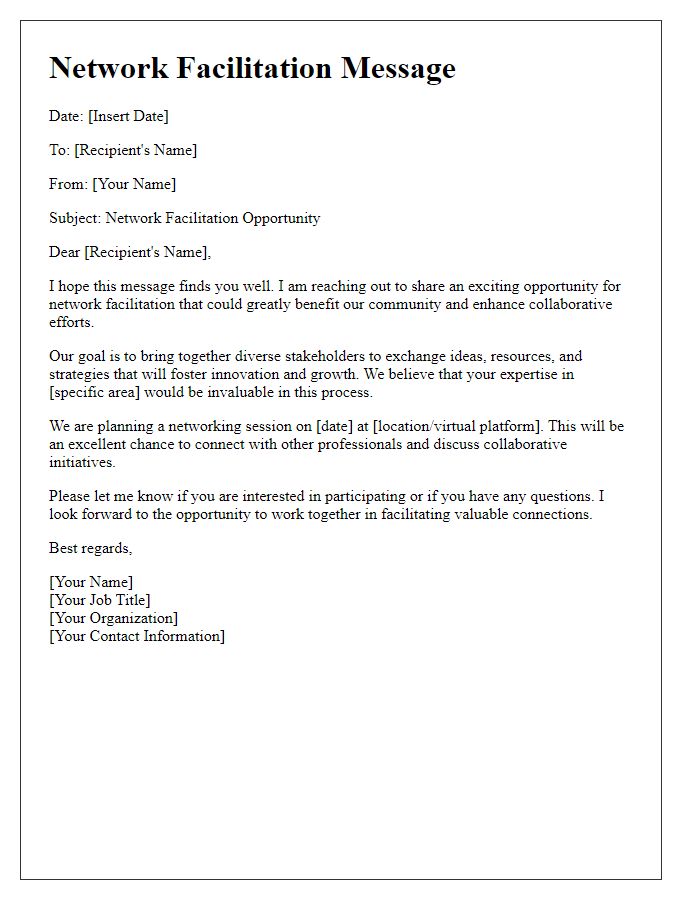Welcome to a world where collaboration unlocks new possibilities! In today's fast-paced business landscape, forging strategic alliances can be the key to leveraging strengths and achieving mutual success. By bringing together unique resources and expertise, these partnerships can drive innovation and open new markets. Join us as we explore effective letter templates designed to introduce strategic alliances and guide your outreachâlet's dive in!

Purpose and Goals
Establishing a strategic alliance often involves clear communication about mutual purposes and goals. Effective introductions can begin by outlining specific objectives, such as increasing market share or enhancing product offerings. Identifying key performance indicators (KPIs) that measure success ensures both parties remain aligned. Additionally, understanding each entity's strengths, such as technological innovation or customer base access, can foster collaboration. Highlighting potential challenges and opportunities within the industry, such as competitive landscapes or changing regulations, can further enrich discussions. Ultimately, solidifying a shared vision and measurable outcomes can lead to a successful partnership, benefiting both organizations and their stakeholders.
Value Proposition
Strategic alliances provide mutual benefits across various industries, enhancing growth and innovation. Organizations, such as tech firms and healthcare providers, leverage resources and expertise to create synergies. The value proposition includes increased market access, shared technology, and reduced operational costs, making alliances attractive. For instance, a partnership between a software developer and a cloud computing service can lead to optimized solutions for clients. By collaborating, both companies can maximize their strengths, drive revenue, and improve customer satisfaction, addressing challenges in a competitive landscape. These strategic alignments often encourage the development of unique products, broadening the array of offerings available to consumers.
Potential Synergies
Strategic alliances often yield significant synergies through collaboration between organizations. Notable synergies include increased market reach, enhanced innovation, and shared resources. For instance, tech companies may align to combine artificial intelligence advancements with big data analytics, resulting in more robust product offerings. Joint marketing campaigns can amplify visibility and expand customer bases across different demographics. Additionally, pooling research and development efforts can lead to accelerated product timelines, reducing costs while driving innovation. Overall, such alliances foster an environment where both entities can leverage unique strengths, ultimately creating a competitive advantage in the marketplace.
Key Stakeholders
In the dynamic landscape of business, strategic alliances play a crucial role in fostering growth and collaboration among organizations. Key stakeholders, such as CEOs of Fortune 500 companies, regional managers of emerging startups, and industry association leaders, are essential in facilitating these partnerships. The identification of mutual interests can pave the way for innovative synergies, increased market reach, and shared resources. For instance, a strategic alliance between technology firms can lead to the development of cutting-edge solutions, while partnerships in the healthcare sector may enhance patient outcomes through integrated services. Establishing clear communication channels among these stakeholders is vital to ensure alignment of goals, effective execution of joint initiatives, and measurement of success through defined performance indicators.
Next Steps and Call to Action
Strategic alliances can significantly enhance business objectives and accelerate growth. Effective introductions ensure a solid foundation for collaboration. Identify mutual interests in industry sectors, such as technology innovation or market expansion. Outline potential benefits, like shared resources and combined expertise. Schedule an initial meeting that includes key stakeholders from both parties, with specific agendas to discuss strategic synergies. Highlight clear next steps, such as drafting a memorandum of understanding (MOU) or setting milestones for collaboration progress. Emphasize the call to action, encouraging partners to engage in preliminary discussions by a specific date to maintain momentum and commitment.













Comments